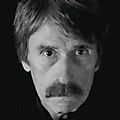On February 14, 1990, Voyager 1 was on the verge of leaving our solar system, never to return. At that moment, it turned around to take one last look at Earth, snapped a picture and turned back to face eternity.
At the time, the little spacecraft was already four billion miles away. Caught in the fractured rays of light from the Sun, our vulnerable little planet was nothing but a blur, a meaningless cosmic smudge, barely a tenth of a pixel.
Lately, I’ve been fascinated by the power of awe. I had never thought about it much, if at all. But in my research for a post in my newsletter Strange Alchemy (strangealchemy1.substack.com), Dr. Dacher Keltner changed all that.
A psychology professor and the author of the book Awe: The New Science of Everyday Wonder and How It Can Transform Your Life, Keltner believes that when we experience awe, it completely changes our perspectives, recalibrating what’s important and what isn’t. We suddenly understand that our personal thoughts, either overly positive or overly negative, are as trivial as that speck of dust Voyager 1 saw more than 30 years ago. And once we understand that, we’re suddenly able to push our ideas into places they might never have gone otherwise.
And yet, when I first saw the Voyager 1 photograph, I have to admit awe wasn’t exactly what I felt—if I felt anything at all. Little did I know it would take an astrophysicist to open my eyes to something I was failing to see on my own. A scientist, for God’s sake, with the heart of a poet: Carl Sagan.
“Look again at that dot. That’s here. That’s home. That’s us. On it everyone you love, everyone you know, everyone you ever heard of, every human being who ever was, lived out their lives. The aggregate of our joy and suffering, thousands of confident religions, ideologies, and economic doctrines, every hunter and forager, every hero and coward, every creator and destroyer of civilization, every king and peasant, every young couple in love, every mother and father, hopeful child, inventor and explorer, every teacher of morals, every corrupt politician, every superstar, every supreme leader, every saint and sinner in the history of our species lived there—on a mote of dust suspended in a sunbeam.”
It was as if someone had blown away an invisible cloud that had prevented me from seeing what was really there hiding inside that grainy nothing of a photograph. Sagan did that.
“The Earth is a very small stage in a vast cosmic arena. Think of the rivers of blood spilled by all those generals and emperors so that, in glory and triumph, they could become the momentary masters of a fraction of a dot. Think of the endless cruelties visited by the inhabitants of one corner of this pixel on the scarcely distinguishable inhabitants of some other corner, how frequent their misunderstandings, how eager they are to kill one another, how fervent their hatreds.
“Our posturings, our imagined self-importance, the delusion that we have some privileged position in the Universe, are challenged by this point of pale light. Our planet is a lonely speck in the great enveloping cosmic dark. In our obscurity, in all this vastness, there is no hint that help will come from elsewhere to save us from ourselves.
“The Earth is the only world known so far to harbor life. There is nowhere else, at least in the near future, to which our species could migrate. Visit, yes. Settle, not yet. Like it or not, for the moment the Earth is where we make our stand.
“It has been said that astronomy is a humbling and character-building experience. There is perhaps no better demonstration of the folly of human conceits than this distant image of our tiny world. To me, it underscores our responsibility to deal more kindly with one another, and to preserve and cherish the pale blue dot, the only home we’ve ever known.”
In that fuzzy, innocuous photograph, there had been no awe. And then, Carl Sagan wrote that and left me speechless. Suddenly, awe was everywhere. Blindingly so. It hadn’t been there before, but now that blue smudge was bordering on the divine. Because a scientist had committed an act of creativity and, in so doing, reshaped my perception of the world.
It seems impossible on most projects but there is every chance that awe might lie hidden somewhere beneath the data, the analytics, what the planners say, what the clients say, what the creative directors say. To you, it might seem like just another assignment. Just another pale blue dot. But put on your Carl Sagan glasses and you might be amazed by what you see. Perhaps even awestruck. ca












